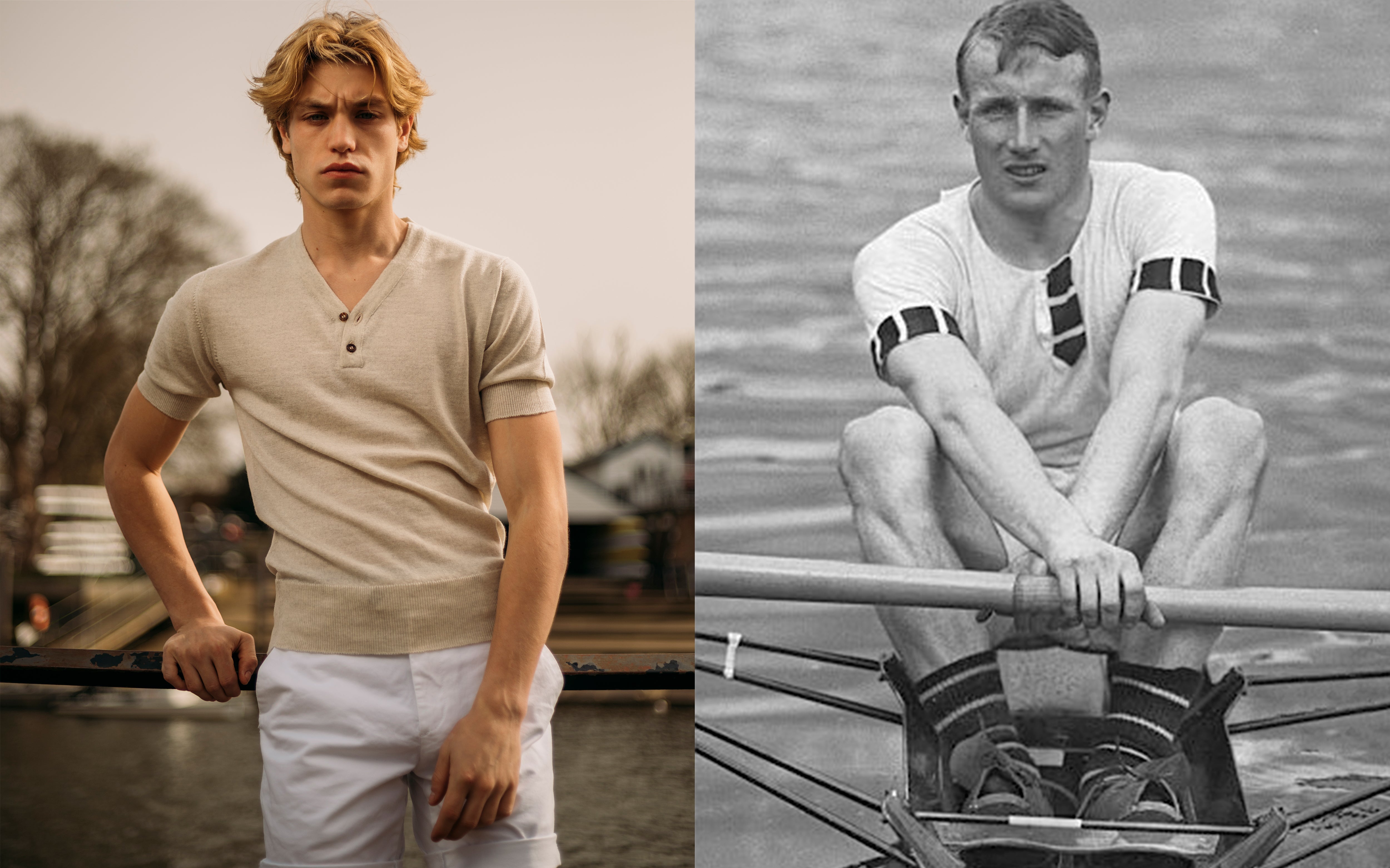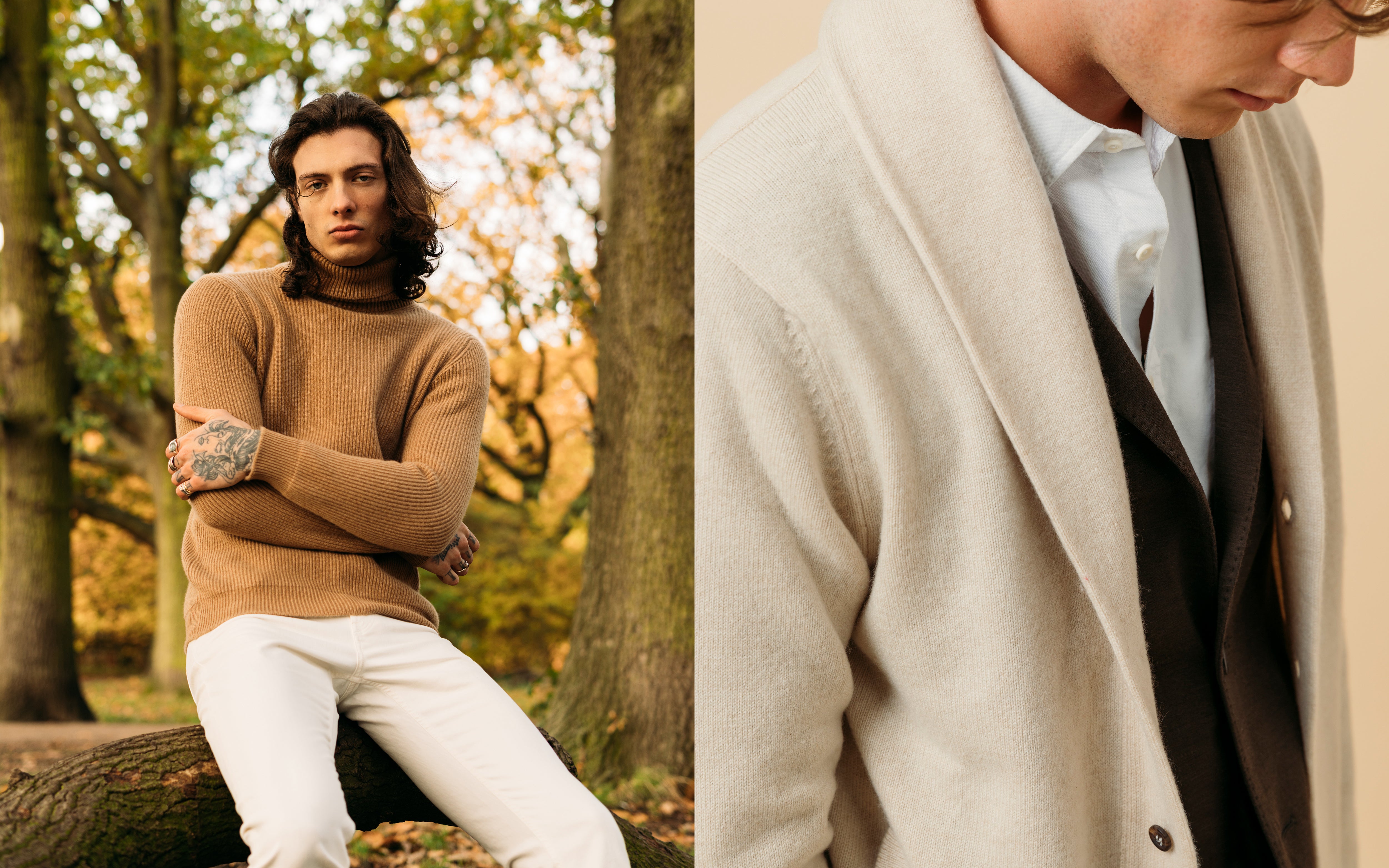
Reinventing the Classics
Here at Colhay’s our primary goal is to create knitwear of the very highest quality. There are several factors required for us to achieve this goal. Firstly, using the very best raw materials - the yarns we use are made from the finest fibres. We also work with highly experienced and knowledgeable knitters in Scotland to produce our garments. The final part of the puzzle is the design. We take inspiration from historical men’s designs and use these as a basis for our pieces, adding slight tweaks to make them more wearable for the modern man.
How does using older designs contribute to the quality?
With knitwear, a lot of the styles that we know today, have been born out of function. Most pieces of knitwear once had a purpose that required them to be sturdy, comfortable and long-lasting all at the same time. Often when pieces are redesigned over and over, the functionality can be lost in favour of aesthetics, but when just a few tiny alterations are made then the functionality and quality of the garment can be restored.
 Left to right: Jim Thorpe in an early version of the college football sweatshirt c.1920; the West Indies cricket team c.1970s; Fred Perry c.1930s; Great Britain Olympics relay team 1920; British fishermen in gansey jumpers 1900s.
Left to right: Jim Thorpe in an early version of the college football sweatshirt c.1920; the West Indies cricket team c.1970s; Fred Perry c.1930s; Great Britain Olympics relay team 1920; British fishermen in gansey jumpers 1900s.
‘I think it's helpful for the wearer to get that function back,’ said Colhay’s founder, Ronnie Chiu. ‘There's always a good reason these pieces were made and I want to bring this functionality back to menswear.’
By its nature and by its construction, knitwear has stretch and when a garment has stretch it can have a wide variety of applications, especially for people with active occupations. Tailored and woven garments were more appropriate for formalities but knitwear was created and worn with function in mind.
The Process
Inspiration tends to come from old photographs, either from libraries, online or on vintage sites. From here, a collection of images is compiled and our team looks at the original pieces in great detail. Often the research into a particular piece becomes incredibly granular, researching what particular knits originally meant to particular communities for example. This way we can be sure we’re doing the garment justice with our redesign.
Next we look at the ways that we can adapt the piece to suit the life and requirements of men today. We make subtle changes to make the garment easy to wear and, often, more elegant and flattering. We then work with our knitters on prototypes. We look together at what is or isn't possible and decide on the best techniques to be used.
The merino henley shirt is a good example of this. We took the traditional shape of the original henley shirt with its longer short sleeves, fairly fitted silhouette for a sporty look and the three button opening on the front, but we made a point of deepening the v neck opening, in contrast to the more rounded opening of the traditional henley shirt, so as to make the overall look more modern.

The cashmere cotton breton stripe sweater is another example. We took inspiration from the tops worn by the French navy since the Napoleonic era with their distinctive blue and white stripes, but developed a luxury version of it, with almost 50% cashmere in the composition, as well as made the stripes contrasting widths for a more modern look. Other features include lengthening the sleeves, making the stripes line up across the body to the arms for a neater look (old naval breton stripe shirts tended to be mismatched - see picture below), making the crew neck shape closer to the neck instead of a very wide boat neck and slimming down the silhouette.

Often there are several prototypes and a lot of back and forth with our knitters, but each change, no matter how miniscule it may seem, plays a large part in the finished garment’s overall quality.
This process of researching historical pieces and then creating prototypes inspired by old designs is not novel or unique to us at Colhay’s, but the level we take it to is unusual.
Ronnie said: ‘It’s rare for designers to go into the detail we do. Everything that we do is well-thought through and considered. That's why we do so many prototypes because we want to get it right.’
"Our customers love to know the backstory behind their pieces and it’s great for us to be able to share these kinds of details and insights with them."

One of our favourite pieces and stories is that of our Cashmere Ribbed Submariner Rollneck sweater. It’s one of our most comfortable and cosy garments, yet it was inspired by a sweater worn in incredibly uncomfortable conditions.
The rollnecks were originally worn by the crews of the Royal Navy serving on board submarines in the first and second world wars. Serving on a submarine meant cramped living quarters, cold temperatures, dirty conditions and extremely long and physical working hours. These men needed clothing that was hardy and durable, plus warm yet breathable. The original submariner sweater had wide ribbed waist bands and cuffs with a big roll neck, so that the entire torso was warm. Made from lambswool, they were also breathable garments which meant men wouldn’t overheat when working in the warmer conditions of the engine room. They dried quickly too, an obvious benefit for the navy crews.

We took inspiration from the original submariner and created the Colhay’s version. Still thick and cosy, but this time made from cashmere for a luxury touch. We also slimmed the fit down slightly as the original version was fairly baggy. This slimmer fit means the sweater can be worn comfortably under a coat as well as giving the wearer a more flattering silhouette. The roll neck is tall to keep the entire neck warm and the armholes are slightly slimmer than you’d find on a standard big sweater. Both elements are designed to ensure the garment is cosy and warm but also not too restrictive. This piece is a prime example of how historical function can combine with modern aesthetics to create a garment of exemplary quality.
If you’re interested in the Cashmere Ribbed Submariner Rollneck, you can find them here.


